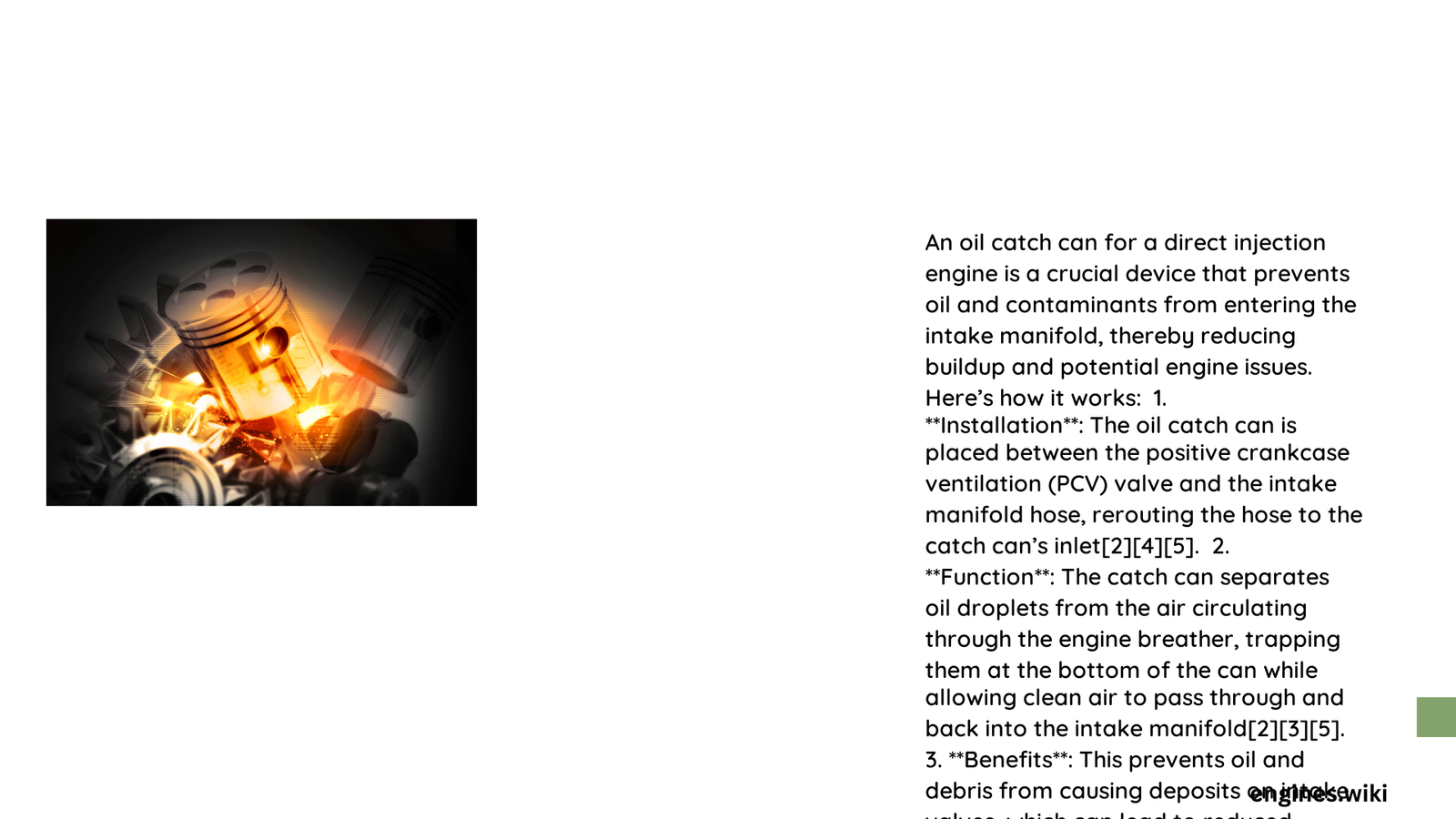A direct injection engine oil catch can is a critical automotive component designed to capture and separate oil vapors and contaminants from the positive crankcase ventilation (PCV) system, preventing harmful buildup in intake manifolds and protecting engine components from premature wear. By strategically intercepting oil mist and preventing its recirculation, these devices offer a proactive solution to maintaining engine health and performance in modern direct injection engines.
What Is a Direct Injection Engine Oil Catch Can?
A direct injection engine oil catch can is a specialized filtration device installed in a vehicle’s engine bay to capture and collect oil vapors and microscopic oil particles that would otherwise circulate through the intake system. Unlike traditional engine designs, direct injection engines are particularly susceptible to carbon buildup due to their unique fuel delivery mechanism.
Key Components of a Catch Can
| Component | Function | Material |
|---|---|---|
| Main Body | Capture oil vapors | Aluminum/Stainless Steel |
| Internal Baffles | Separate oil from air | Stainless Steel Mesh |
| Drain Valve | Remove collected oil | Brass/Stainless Steel |
| Mounting Bracket | Secure installation | Steel/Aluminum |
Why Do Direct Injection Engines Need a Catch Can?

Direct injection engines face unique challenges:
- Carbon Buildup Prevention: Without a catch can, oil vapors coat intake valves, causing significant carbon deposits
- Performance Maintenance: Reduces potential power loss from restricted airflow
- Engine Longevity: Minimizes premature wear on critical engine components
How to Select the Right Catch Can?
When choosing a direct injection engine oil catch can, consider:
- Compatibility with your specific engine model
- Internal filtration mechanism
- Ease of installation
- Drainage mechanism
- Material quality
Installation Considerations
Recommended Tools
- Adjustable wrench
- Plumber’s tape
- Mounting hardware
- High-quality hoses
- Check valve (optional)
Typical Installation Steps
- Identify optimal mounting location in engine bay
- Connect PCV system lines
- Secure catch can with mounting bracket
- Route outlet and drain lines
- Ensure proper sealing of all connections
Performance Impact
Quantifiable benefits of installing a direct injection engine oil catch can include:
- Up to 90% reduction in intake valve carbon deposits
- Potential improvement in fuel efficiency
- Enhanced engine responsiveness
- Extended engine component lifespan
Maintenance Requirements
- Empty catch can during regular oil changes
- Inspect hoses and connections quarterly
- Clean internal components annually
- Monitor for any signs of excessive oil accumulation
Cost Considerations
| Catch Can Type | Price Range | Complexity |
|---|---|---|
| Basic | $30 – $50 | Low |
| Mid-Range | $100 – $200 | Medium |
| Professional | $200 – $300 | High |
Expert Recommendations
Professional mechanics suggest:
– Choose catch cans with high-quality internal baffling
– Prioritize corrosion-resistant materials
– Ensure proper routing of PCV lines
– Consider professional installation for complex engine configurations
Potential Limitations
While beneficial, catch cans are not a complete solution:
– Cannot replace regular engine maintenance
– Effectiveness varies by vehicle model
– Requires periodic monitoring and maintenance
Conclusion
A direct injection engine oil catch can represents a proactive approach to engine maintenance, offering significant protection against performance-robbing carbon buildup and potential long-term damage.
